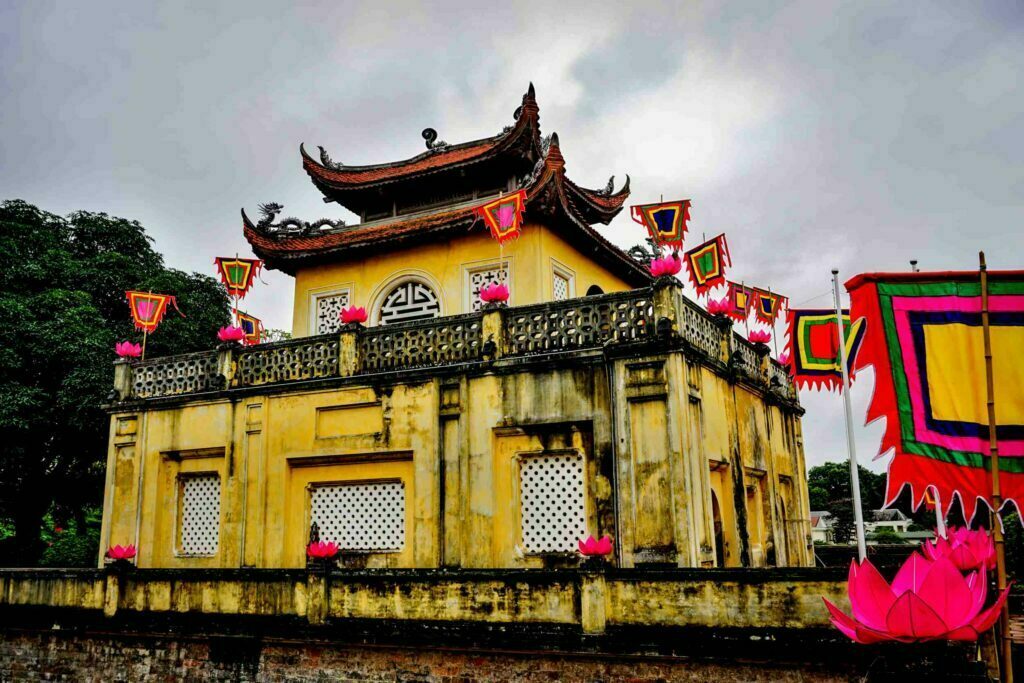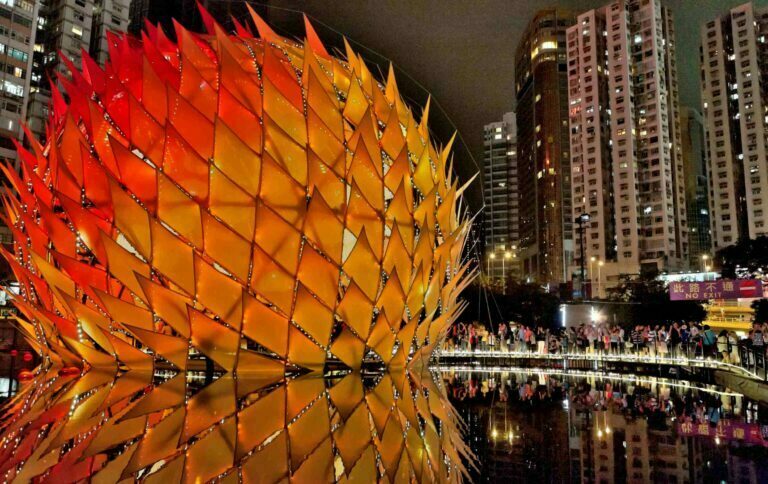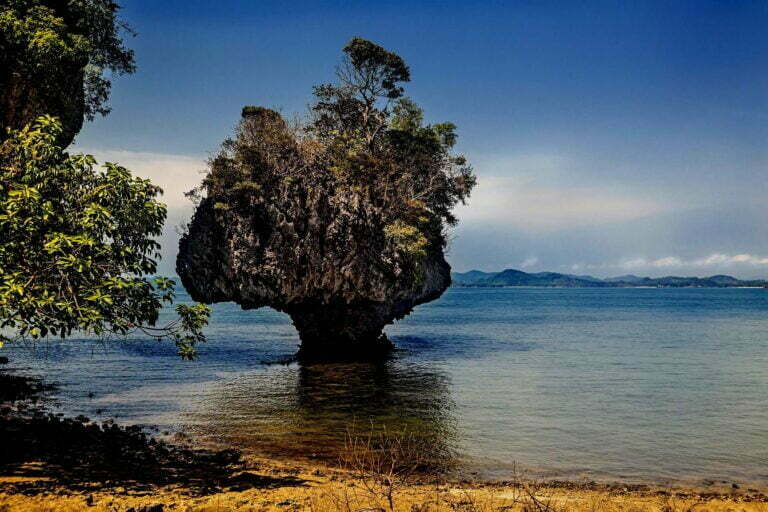Vietnam UNESCO World Heritage Sites. Halong Bay. Hoi An. Thang Long. My Son Sanctuary. Trang An. Phong Nha-Ke Bang National Park. Ho Dynasty. Hue Monuments. The Red River Delta’s tribal Viets have made their mark on the history of Vietnam. They were reached by China’s southern expansion in the 3rd century BCE. Since then, contact with China, the wellspring of most of Vietnam’s high culture, has been a recurring subject in the country’s history.
Vietnam heritage
After renouncing Chinese sovereignty in 938 CE, Vietnam gave the Chinese emperor lacquerware, animal skins, ivory, and tropical products as a tribute-paying state. They were rewarded with scrolls on philosophy, administration, and literature as a result of their efforts.
Sinic culture has infiltrated society at a profound level. However, it had a greater impact on the aristocracy and Mandarin families than on the people. Unique customs, beliefs, vocabulary, lifeways, and gender interactions were preserved.
When they weren’t addressing the Chinese court, Vietnam’s monarchs exacted tribute from ethnic minorities on the outskirts of the Vietnamese state and referred to themselves as emperors. Although the cultural and spatial divides between the Vietnamese court and the most remote parts of society were not as wide as they were in China, they were nevertheless substantial.
While Vietnam is almost the same size as a Chinese province and has a similar population. With increasing distance from the capital, the Vietnamese state’s ability to rule weakened. The cliché “The emperor’s writ stops at the village gate” encapsulates the refractory nature of bamboo-hedged peasant communes.
Vietnam UNESCO World Heritage Sites
The varied and seductive charms of Vietnam can make choosing where to go on your next vacation to the S-shaped country challenging. If that’s the case, starting your investigation of Vietnam’s rich history and unequaled natural settings with a visit to one of the country’s 8 UNESCO world heritage sites Vietnam may be a good place to start.
Halong Bay
Halong Bay is a 1,600-island archipelago located in the Gulf of Tonkin. The limestone pillars are forming a magnificent seascape. Most of the islands are deserted and undisturbed by human presence due to their precipitous nature. The site’s stunning natural beauty is complimented by its rich biological diversity.
The captivating, heart-stopping scenery of Ha Long Bay is well-known. It has always been a famous tourist destination and is possibly Vietnam’s most visited UNESCO World Heritage Site. Halong Bay entices travelers with its breathtaking landscape of magnificent rocky peaks rising and piercing through the tranquil emerald sea, attracting millions of visitors each year.
If you take a rowing boat into one of the magical caves, you’ll be able to see the concealed limestone pillars shine as the light hits the reflected water. A trip to Ha Long Bay is something that everyone should do at least once in their lives. What do you have to lose? Get out of bed and plan your next vacation to Ha Long Bay for a once-in-a-lifetime adventure.
Location: Ha Long City, Quang Ninh Province
Year of recognition: 1994
Hoi An Ancient Town
Hoi An Ancient Town, which dates from the 15th to the 19th century, is a particularly well-preserved example of a South-East Asian trading port. Its architecture and street plan represent the indigenous and foreign elements that have come together to create this one-of-a-kind cultural monument.
At night, the soft amber hues of candle-lit lanterns transform Hoi An into a lovely Lantern Town, according to visitors. The vibrant atmosphere of Hoi An has survived the test of time, and it’s simple to see why it’s one of Vietnam’s most spectacular World Heritage Sites.
Location: Hoi An City, Quang Nam Province
Year of recognition: 1999
Central Sector of the Imperial Citadel of Thang Long – Hanoi
The Ly Viet Dynasty built the Thang Long Imperial Citadel in the 11th century to commemorate the Dai Viet’s independence. On drained ground reclaimed from the Red River Delta in Hanoi, it was built on the ruins of a Chinese fortification dating from the 7th century.
It was the undisputed seat of regional political power for about 13 centuries. The Imperial Citadel buildings and remains of the 18 Hoang Dieu Archaeological Site depict a distinct South-East Asian culture unique to the lower Red River Valley, where influences from China in the north and the ancient Kingdom of Champa in the south collide.
Until 2004, the Citadel was closed to the general public. It was designated as a UNESCO World Heritage Site in 2010 as part of Hanoi’s 1000th birthday celebrations.
Location: 19C Hoang Dieu, Dien Bien, Ba Dinh, Ha Noi
Opening hours: 8:00 AM to 5:00 PM daily except for Mondays
Year of recognition: 2010
My Son Sanctuary
A trip to the My Son Sanctuary, about a one-hour drive from Hoi An, will transport you to a period of Vietnamese history unlike any other. A unique society formed on the coast of modern-day Vietnam during the 4th and 13th centuries, with spiritual roots in Indian Hinduism.
The ruins of a complex of spectacular tower-temples placed on a dramatic site that served as the Champa Kingdom’s religious and political capital for most of its existence exemplify this. This World Heritage Site in Vietnam is a stunning architectural ensemble of more than 70 tower structures that are thought to be temples and tombs dedicated to Hindu gods.
The temples, which are nestled in a valley between two majestic mountain ranges, are claimed to reflect the majesty of the sacred Mount Meru, a mythological mountain at the center of the universe where Hindu gods reside. The exquisite carvings on the temples, representing scenes and symbolism from Hindu mythology, will allow visitors to see the Cham’s skilled mastery and technological prowess.
Location: Duy Phu, Duy Xuyen District, Quang Nam Province, Vietnam
Opening hours: 6:30 AM to 6:30 PM daily
Year of recognition: 1999
Trang An Landscape Complex (Ninh Binh)
The Trang An Landscape Complex is a magnificent landscape located on the southern edge of the Red River Delta. It was formed by limestone karst peaks interspersed with lowlands. Many are partially underwater and encircled by sheer, almost vertical cliffs.
Cave exploration at various heights has uncovered ancient indications of human activity dating back more than 30,000 years. Trang An depicts the seasonal hunter-gatherers who live in these highlands. And how they’ve responded to significant climatic and environmental shifts. Following the previous ice age, the landscape was repeatedly inundated by the sea.
The story of human occupancy continues into the historical era, through the Neolithic and Bronze Ages. In the 10th and 11th centuries AD, Hoa Lu, the historical capital of Vietnam, was strategically constructed here. There are also temples, pagodas, rice fields, and tiny communities on the land.
Location: Red River Delta, Ninh Binh Province
Year of recognition: 2014
Phong Nha-Ke Bang National Park (Quang Binh Province)
In 2003, the Phong Nha-Ke Bang National Park was added to the UNESCO World Heritage List. The Hin Namno Nature Reserve in the People’s Democratic Republic of Laos shares a border with it. Limestone plateaux and tropical woods dominate the park’s topography. It has a wide range of geological features and magnificent natural events.
There are numerous caverns and underground rivers in this area. The place has a lot of variety and a lot of endemic species. The extension ensures a more cohesive ecosystem while also offering greater protection for catchment areas, which are critical for the preservation of limestone landscapes.
The Paradise Cave, located within the National Park, is a renowned tourist attraction. There’s something for everyone, from mud bathing for spa goers to thrilling kayaking and zip-lining excursions for adrenaline addicts.
Location: Phong Nha, Bo Trach District, Quang Binh Province
Opening hours: 7 AM to 4 PM daily
Year of recognition: 2003
Citadel of the Ho Dynasty (Thanh Hoa Province)
The Ho Dynasty citadel, built in the 14th century according to feng shui principles. It attests to the neo-blooming Confucianism’s in late 14th-century Vietnam and its expansion throughout East Asia.
It was built on an axis connecting the Tuong Son and Don Son mountains in a plain between the Ma and Buoi rivers, according to these ideas, in a region of exceptional scenic value. The citadel buildings are an exceptional example of the new type of imperial metropolis in Southeast Asia.
Location: Vinh Tien, Vinh Loc District, Thanh Hoa
Opening hours: 7:30 AM to 6 PM daily
Year of recognition: 2011
Complex of Hué Monuments (Hue)
Hué, which became the capital of unified Vietnam in 1802, served as the political, cultural, and religious center of the Nguyen dynasty until 1945. The Perfume River weaves its way through the Metropolis City, Imperial City, Forbidden Purple City, and Inner City, creating a stunning natural environment for this unique feudal capital. It has a nostalgic and romantic feel to it, as if you’ve been transported back in time.
The Imperial City, royal mansions, temples, tombs, and fortresses are among the many sites that make up this Vietnamese World Heritage Site. Visitors will undoubtedly be immersed in an examination of Vietnam’s historical, cultural, and spiritual essences during the Nguyen Dynasty if they visit the site.
Location: Hue City, Thua Thien Hue Province
Opening hours: 8 AM to 5:30 PM daily except for Thursday (opening from 8 AM to 10 PM)
Year of recognition: 1993




